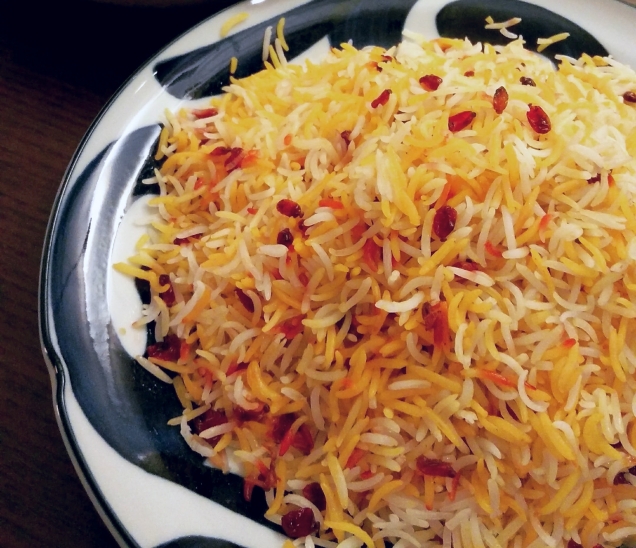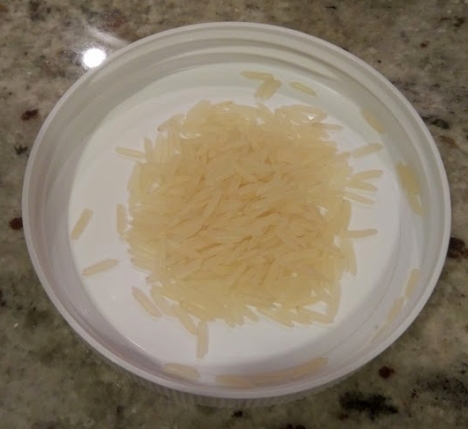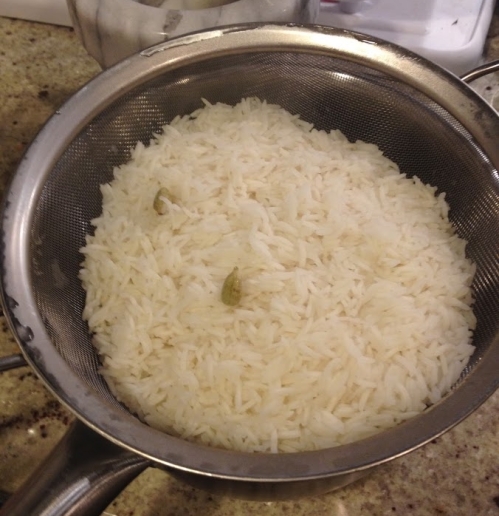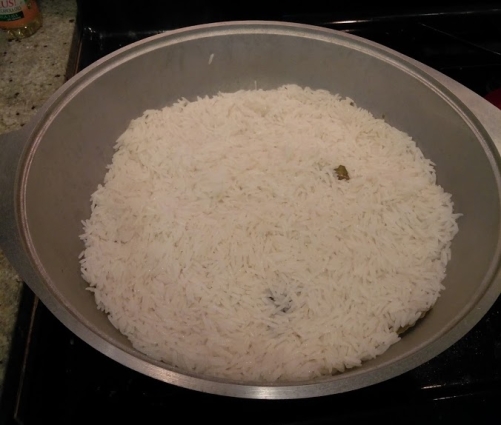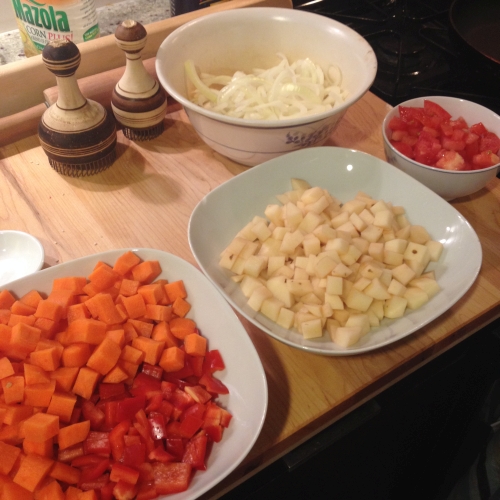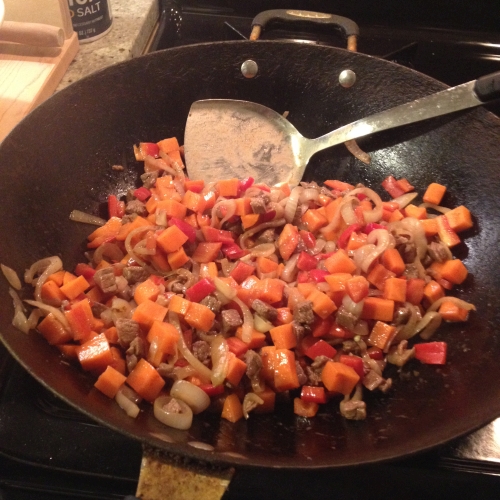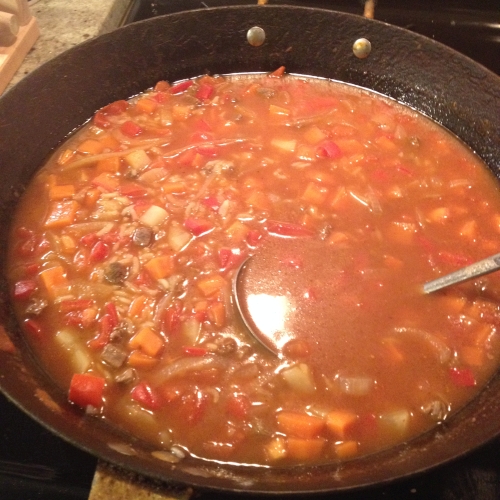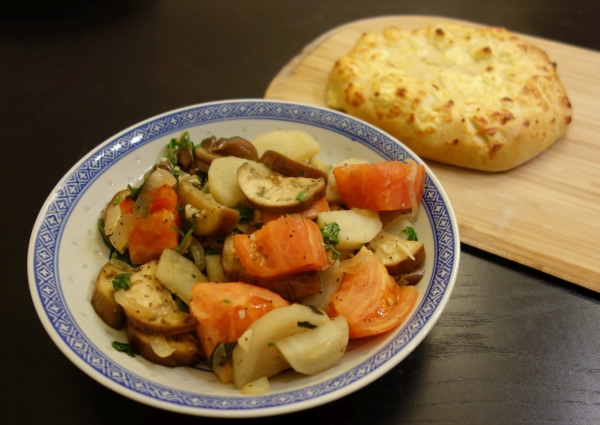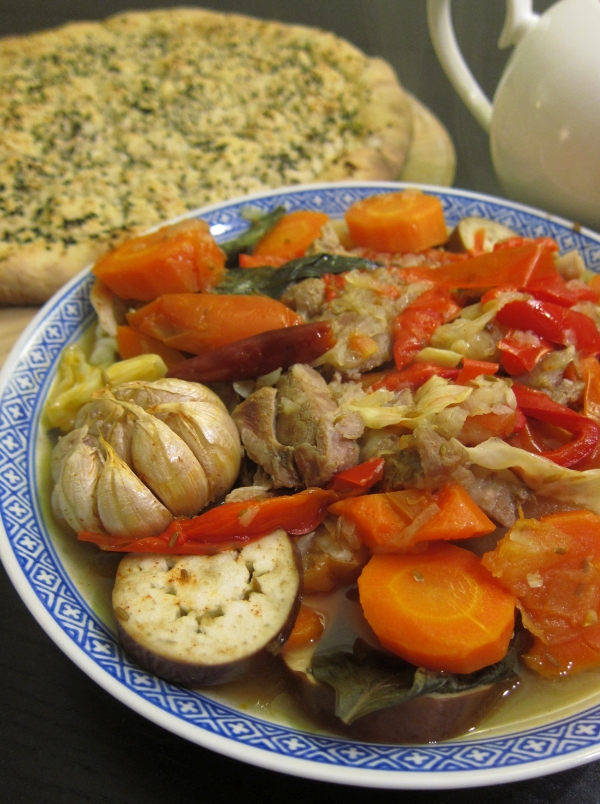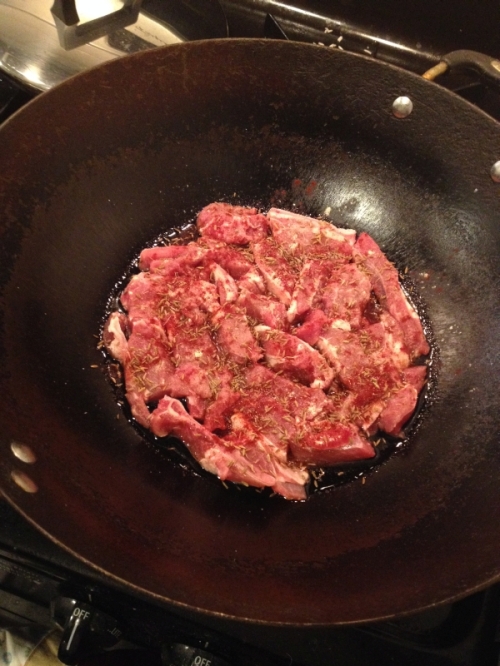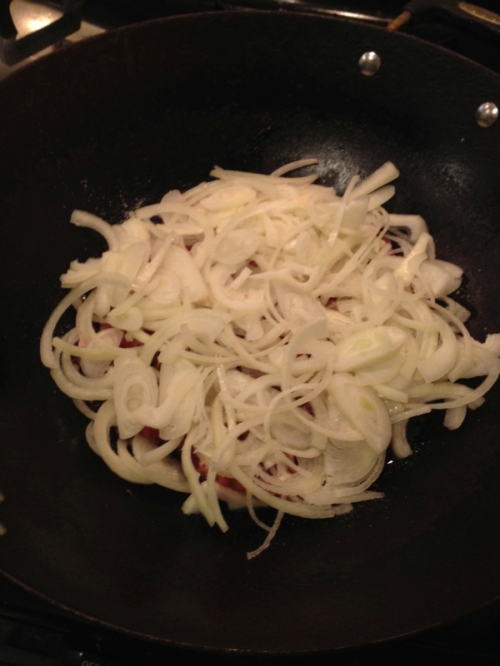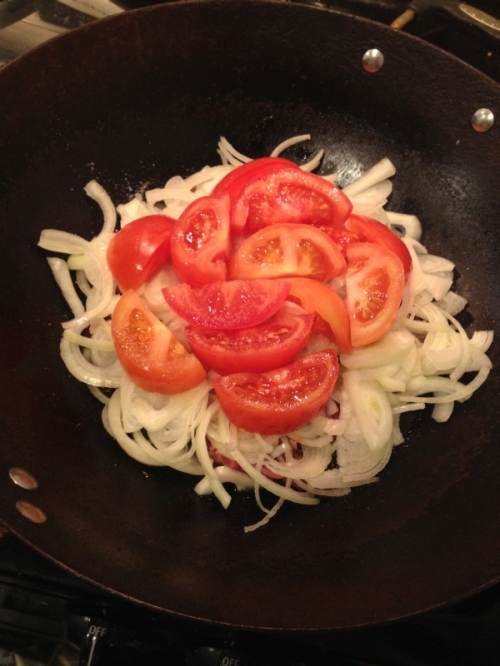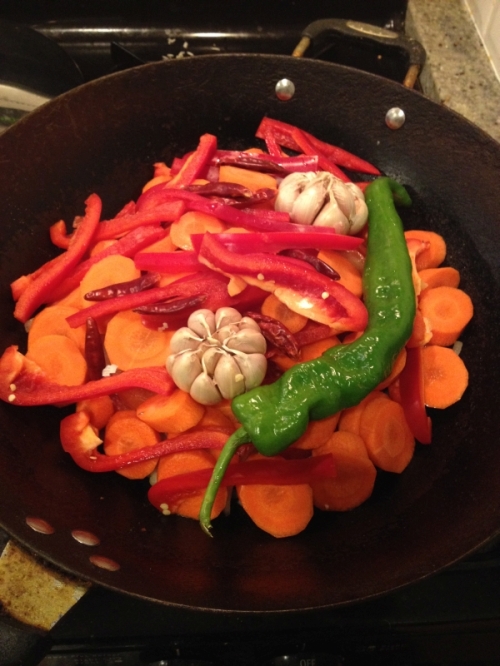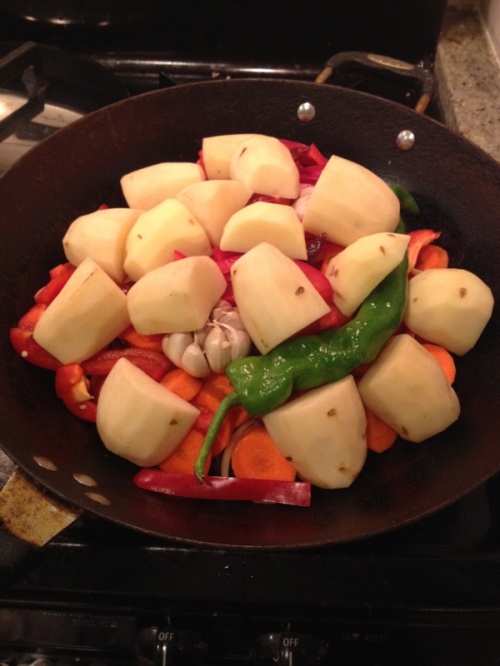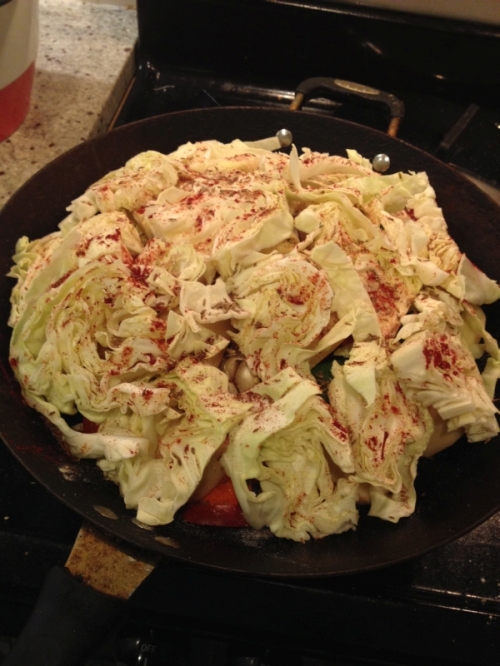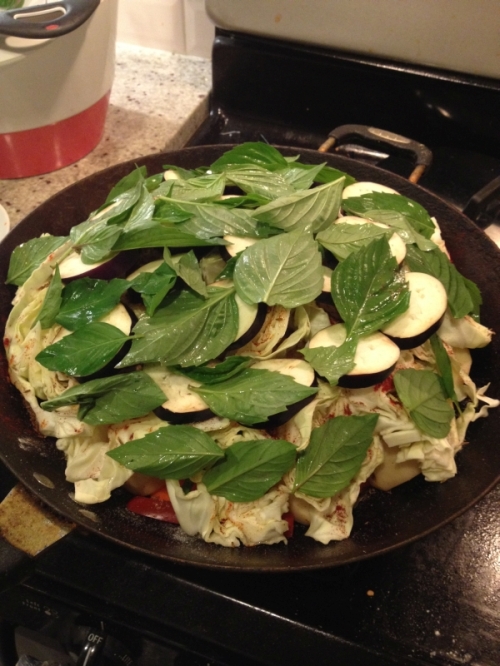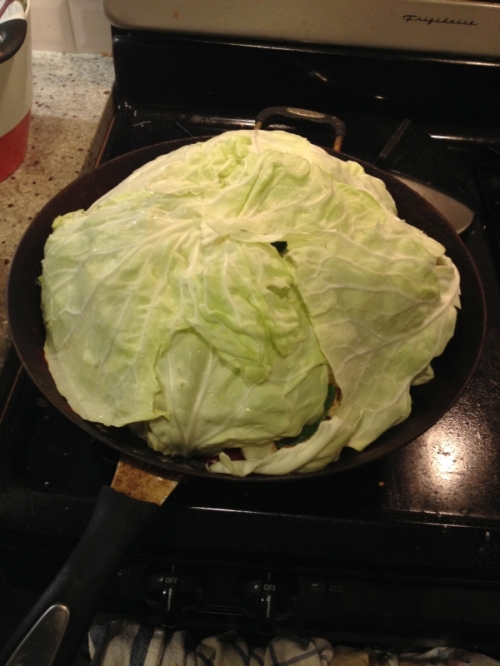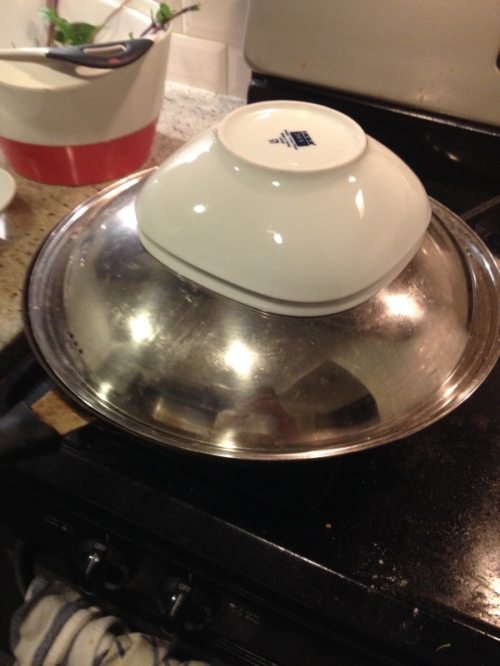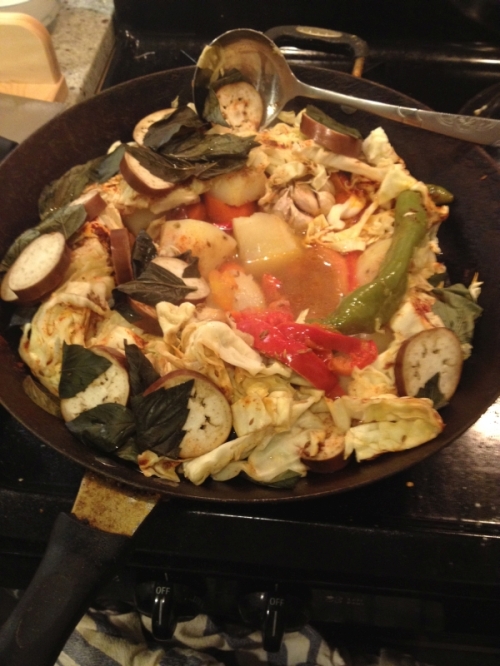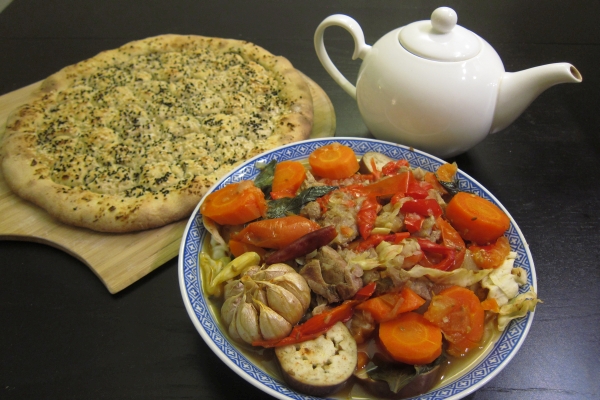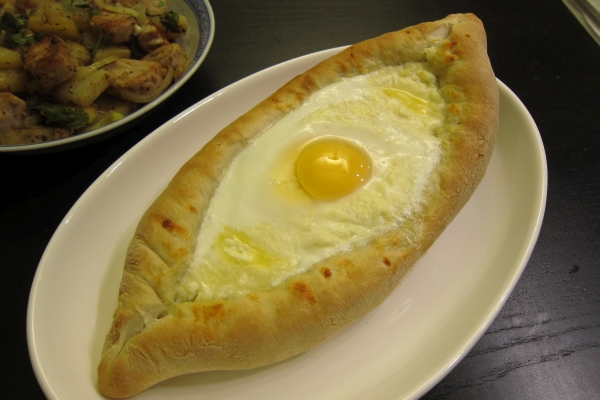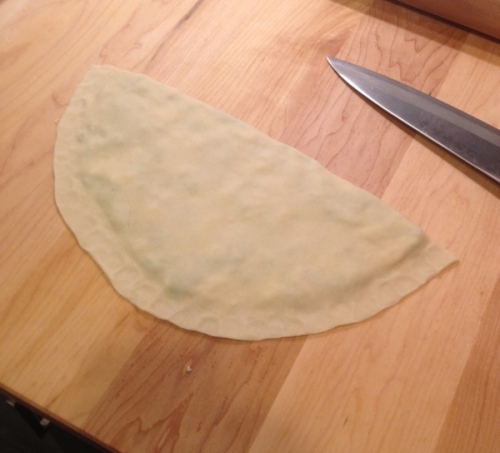
My version of Uzbek plov, cooked in an Instant Pot.
Plov in an Instant Pot instead of a kazan? Isn’t that sacrilege? Possibly. But I’ve discovered that cooking plov in an Instant Pot or electronic pressure cooker is faster, easier, tastes just as good as cooking in a kazan (dare I say it, maybe even better), and most importantly – the results are consistently repeatable!
Ingredients (4 portions)
600 mL of rice (about 500 grams) – long discussion of rice type in the original plov post, but long story short – don’t use East Asian varieties of rice, use a round, medium or long grain rice – e.g. risotto rice, paella rice, Turkish baldo rice, and in a pinch you could use basmati. I use Turkish baldo rice, (Amazon link). They also sell it at Kalustyan’s in NYC.
Water – see below for amount
0.5 lb lamb meat
Small piece of lamb fat, chopped into small pieces (optional)
Vegetable oil – canola or peanut (I prefer peanut, it tastes better)
3 medium-sized carrots, sliced into sticks 5-6cm long and 0.5×0.5cm thick
1 medium to large onion, sliced into half-moons
1 small onion, halved (optional)
Cumin seed, roughly ground in mortar and pestle
Salt
Garlic head
A few dried or fresh chili peppers
Barberries (optional) – they add a nice sour flavor. You can find these at Kalustyan’s.
Time budget: 30 mins prep, 15 minutes sauteing, 15 minutes pressure cook + 10 depressurize, 5 minutes pressure cook + 10 depressurize, 20 minutes steaming = roughly 2 hours
How much water to use and how to rinse the rice
The right water to rice ratio is 1:1 by volume, or 1.2:1 by weight. Make sure to account for water sticking to your rice after you rinse it. Example process:
1. Weigh the dry rice, find it is 500g
2. Rinse the rice
3. Weigh the rinsed rice, find it now weighs 700g
4. Calculate needed water = 1.2 * 500 = 600g
5. But there is 200g of water stuck on the rice, so we only need extra 400g of water. Measure this out and set aside.
Instructions
1. Put the instant pot on ‘saute’ mode and put in the lamb fat pieces. Let them fry until they have released most of their fat and only the cracklings are left. Remove the cracklings (they make a nice snack). Skip this step if you don’t have any lamb fat.

2. Pour some vegetable oil in, enough to coat the bottom of the pot (if you put enough fat in from step 1, you might not need any). Then put your small onion in, and roll it around in the oil, letting it fry until slightly brown on the outside, then remove the onion and discard it. People do this because they claim that the onion ‘absorbs’ the bad taste of the vegetable oil. I just do it for the sake of tradition, but you can probably skip it if you want.

3. Put in the onion slices and let these fry 5-10 min until they are a nice brownish color – they don’t need to be caramelized.

4. Put the meat in and fry it for a minute until it’s lightly browned on the outside – do not go overboard in cooking it since we are going to pressure cook it. It should still be raw and soft at this stage.
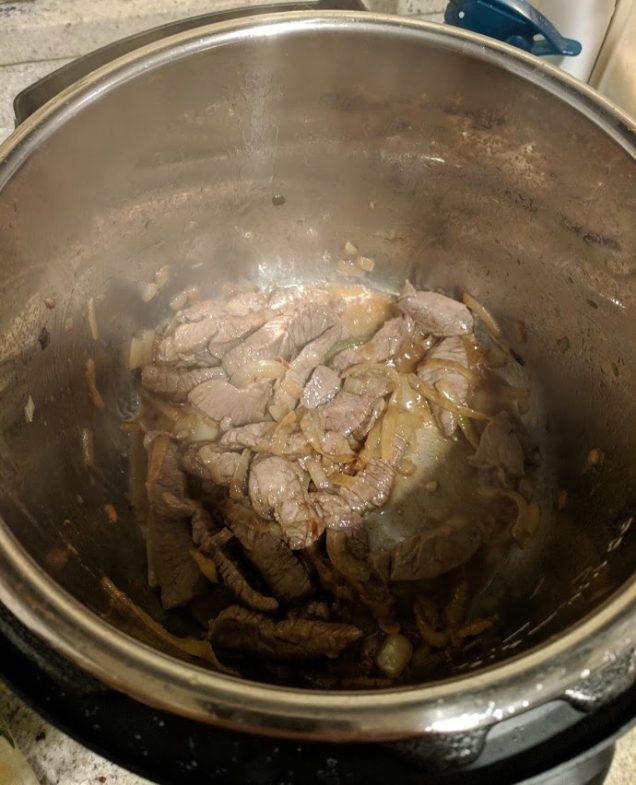
5. Put the carrots in along with a pinch or two of cumin seed and mix everything up. Cook the carrots for a while until they start to brown.

6. Pour in the water you set aside (explained above). Put a pinch or two of salt in, the chili peppers, and stir everything. Before you put the lid on, make sure nothing is sticking to the bottom of the pot. Close the instant pot lid, set the vent to ‘Seal’, and set the Meat/Stew setting for 15 minutes. You will notice a garlic in the photo, but actually it is better to put it in later (it will disintegrate if you put it in now).

7. After the 15 minutes are up, let it sit for 10 minutes. Open the lid and put the barberries in. Then quick release the pressure and place the rinsed rice in an even layer ON TOP of the other ingredients – DO NOT MIX. You want the rice layer to be as flat and even as possible. You can put in the garlic head if you didn’t in step 7 (bury it in the middle of the rice). Then again close the lid, set the vent to ‘Seal’, and set the ‘Pressure Cook’ setting for 5 minutes.

8. After the 5 minutes are up, let it sit for 10 minutes, then quick release the pressure. Fluff up the rice a bit with a fork to help the grains separate, and let the rice cool down and firm up for a bit before you plate it.

10. The plov is ready! Plate it with the rice on bottom, meat/carrots on top, and garlic in the middle. The rice grains should be individual and slightly chewy, though cooked through – ‘al dente’.

Summary:
Measure out the rice by weight, and target 1.2x that much in water. Rinse the rice, weigh it, and determine the remaining amount of water needed. Keep the water aside.
1. Prepare the oil/fat
2. Saute the onions until brownish
3. Brown the meat
4. Put in the carrots and cumin
5. Put in the water, put in salt, chilis
6. Meat/stew setting for 15 minutes, release pressure after 10 minutes
7. Put rice in an even, flat layer on top, put barberries, put garlic
8. Pressure cook on high for 5 minutes, release pressure after 10 minutes
